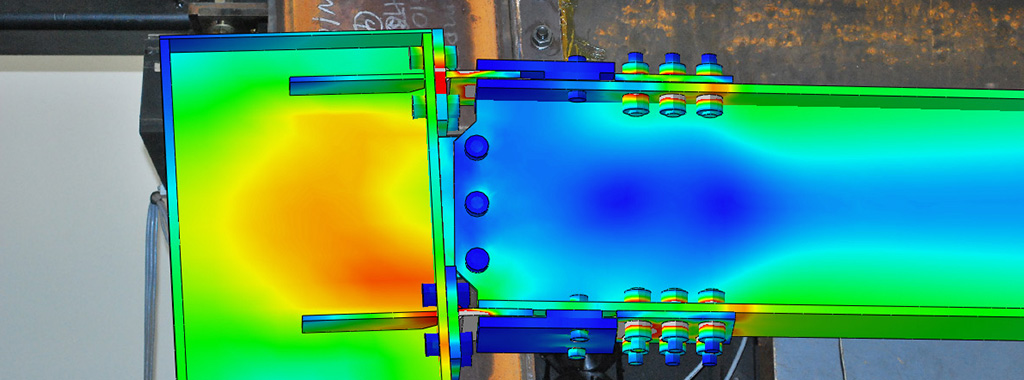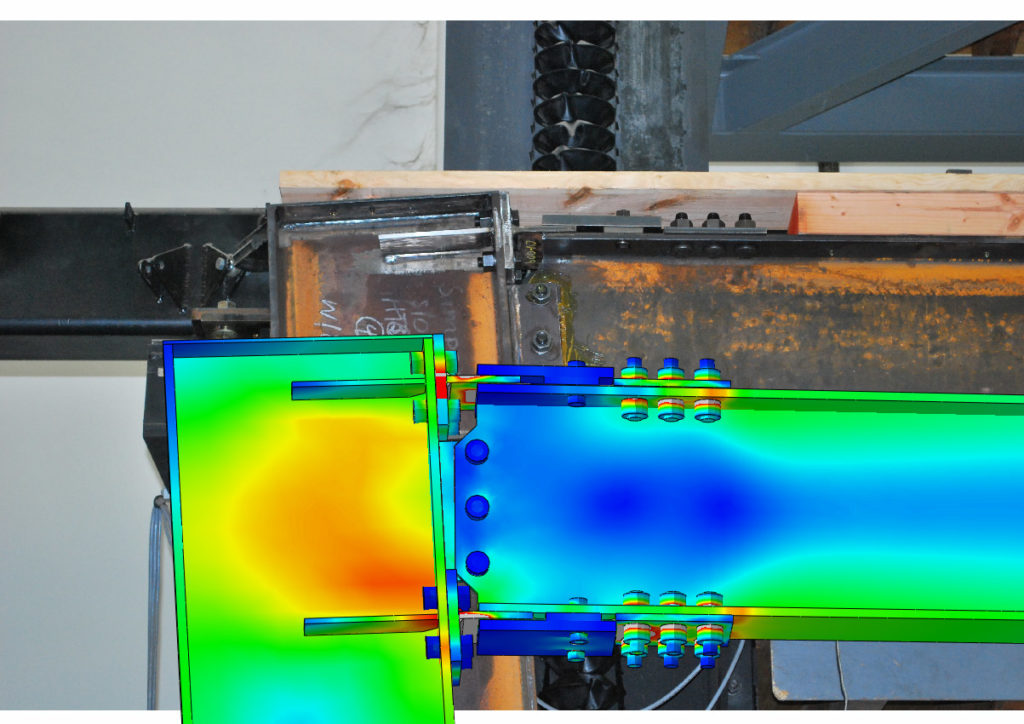Computer-simulated product testing is being used increasingly in modern engineering and manufacturing because it provides a low-risk, time- and cost-efficient means of modeling system performance using a wide array of variables before a physical prototype has been created. The following Blog post outlines some of the uses and advantages of integrating this technology into the product development process.
The role of test simulation in product design might not be the general focus of the Structural Engineering Blog. However, you may have noticed that computer simulation plots have been cited in a few previous postings. Nowadays, it’s rare to talk about product development without mentioning computer simulation at some point. The aim of this post is to give you a better sense of how test simulation can benefit product development and innovation.
Simpson Strong-Tie is a manufacturing company specializing in structural product solutions. Product innovation has been key to the company’s success ever since the production of the first joist hanger in 1956 by the company founder, Barclay Simpson. And with increasing competition and market pressure, product innovation becomes ever more critical to the company’s bottom line.
The ultimate goal of product development is to produce the best design as efficiently as possible. At Simpson, physics-based computer numerical modeling and simulation already form a key tool in our design process. Research published by the Aberdeen Group in 2014 reported that best-in-class companies were leading the way in utilizing simulation software to arm their employees with the insight needed to develop and optimize today’s products.
Finite element analysis (FEA) tools have been an essential component of any engineer’s toolbox for years. The ability to create a virtual prototype or realistic representative model of a part or assembly before physical prototyping offers companies a much faster product development path than was previously possible. Most of the time, simulation is used early in the design cycle to investigate a set of predetermined candidate designs — in which it has proven to be a more efficient method than running physical tests alone for isolating the best design. At other times, simulation is used alongside physical validation tests to determine whether the design meets specifications and to explore potential failure modes.
How can simulation power innovation?
When Thomas Edison was asked about finding success amidst failure, he stated, “If I find 10,000 ways something won’t work, I haven’t failed. I am not discouraged, because every wrong attempt discarded is another step forward.”
With computer simulation, one can evaluate many design concepts in a shorter time than one can with physical prototyping. A virtual test workflow drastically reduces the design, prototype and test cycle that are required in a typical product innovation process. For example, a typical concrete product development cycle involves a long process of concrete pouring, curing and producing physical prototypes. The physical design iteration cycle could take months, whereas a simulation design cycle may take only a couple of weeks.
Another key part of the virtual design process is to try out many variations of design parameters in “what if” scenarios once the computer simulation model is validated and designers have the confidence to use simulation results to guide design decisions. With more and more affordable, high-performance computing power available from cloud or onsite servers, more complex simulations can be performed at a given time. As a result, a faster cycle of virtual trials speeds up the entire product innovation process. In many cases, hundreds of design concepts are virtually tested before physical prototyping begins.
Besides improving the speed of development and cutting costs, simulation also helps improve product quality. For example, the global and detailed aspects of product performance can be identified and measured easily using simulation. The insight gained from simulation can be used to troubleshoot product failure and optimize the design.
Simulation enables us to develop new products in a virtual environment built on real-world data with much lower cost or risk. Simulation is already an essential part of the innovation process. Simulation is powering modern manufacturing innovation. We will see this trend accelerate further in the future.







